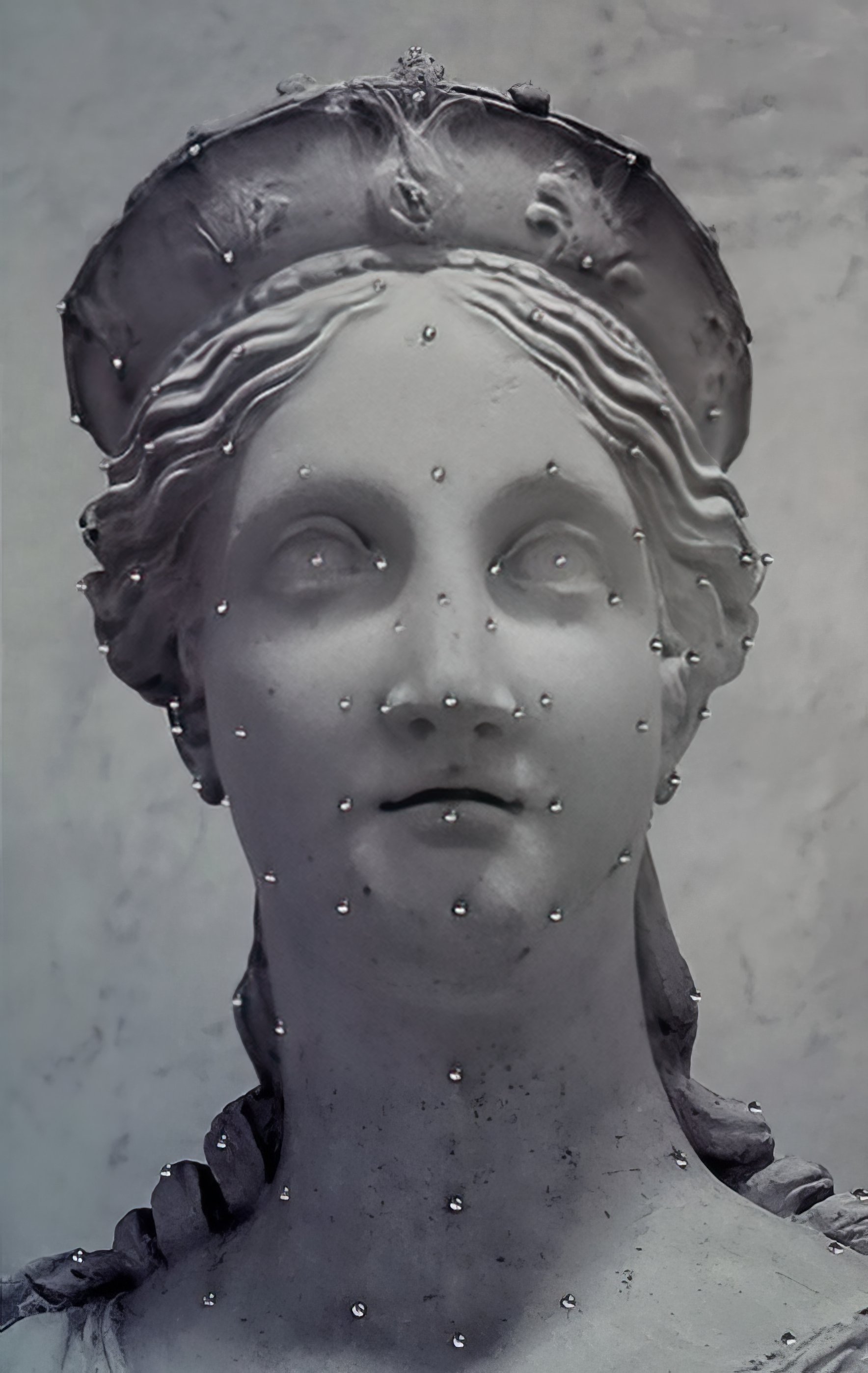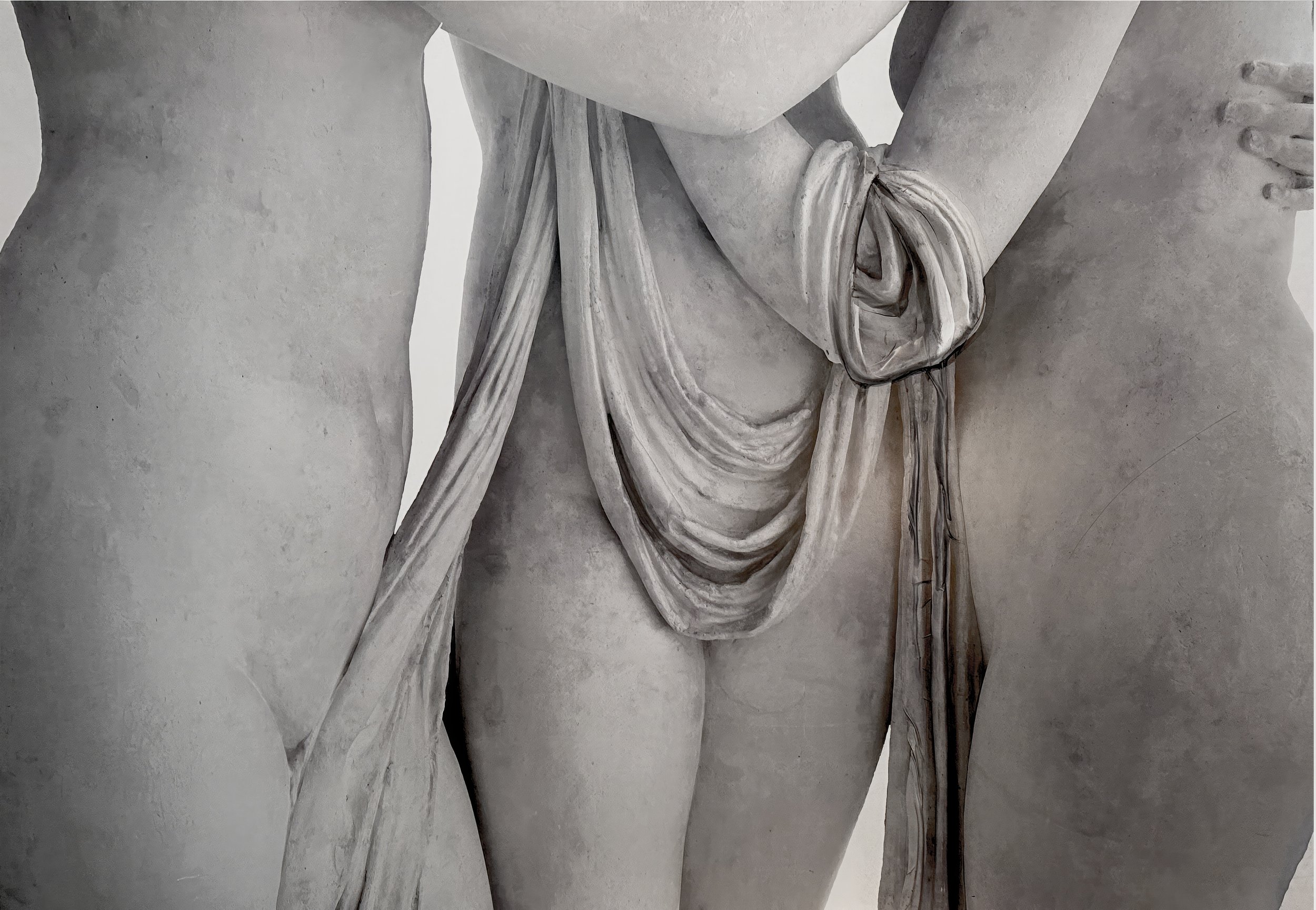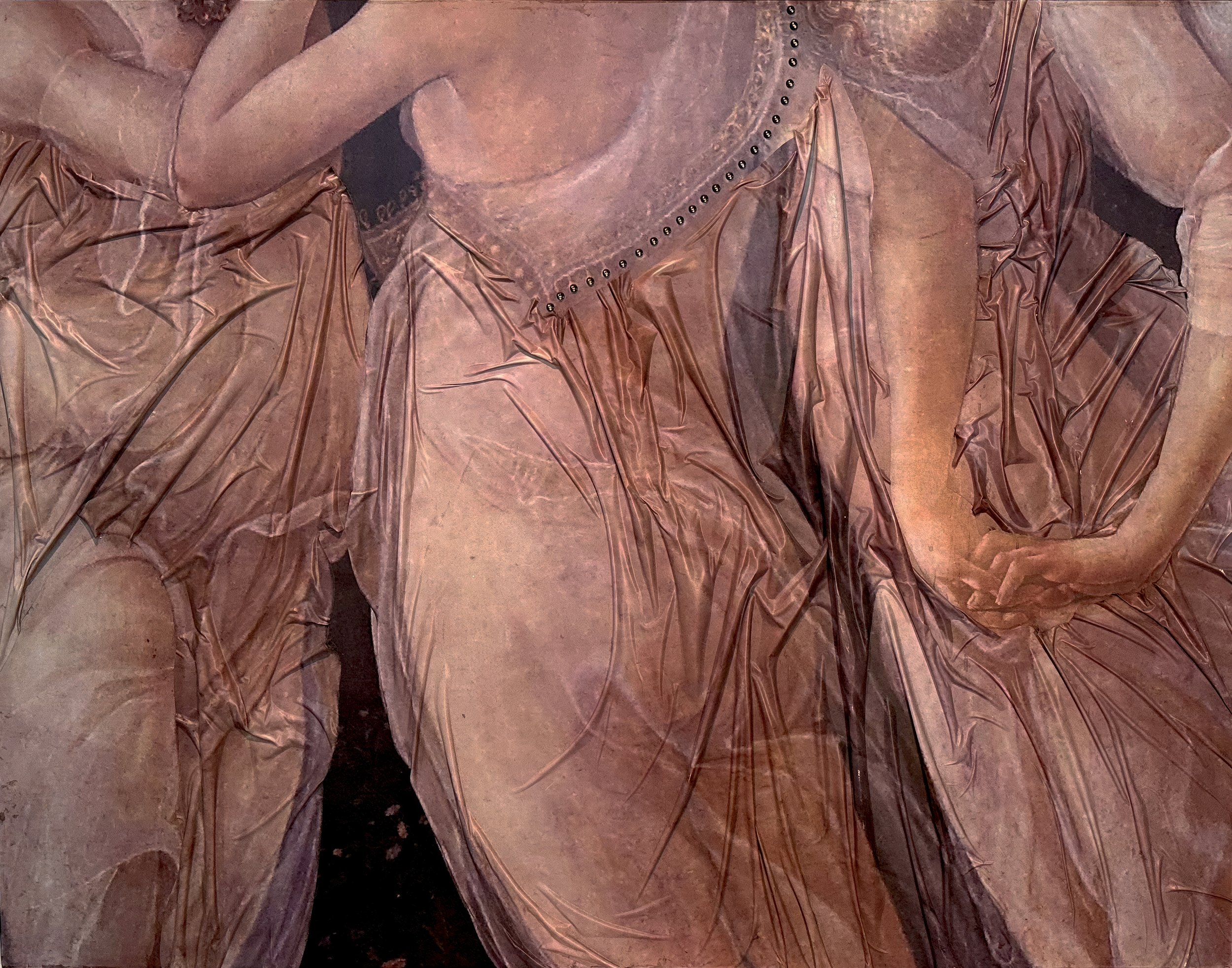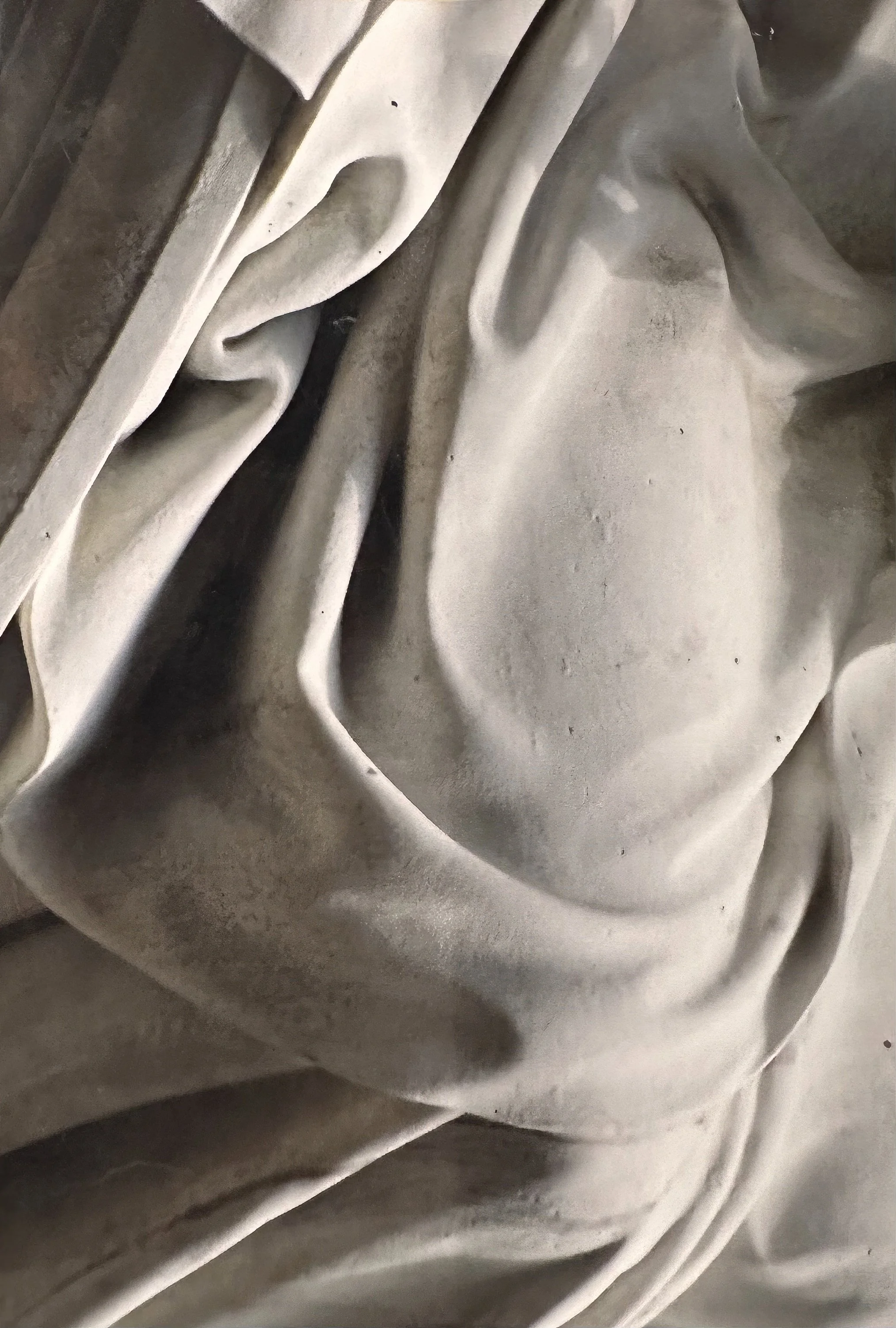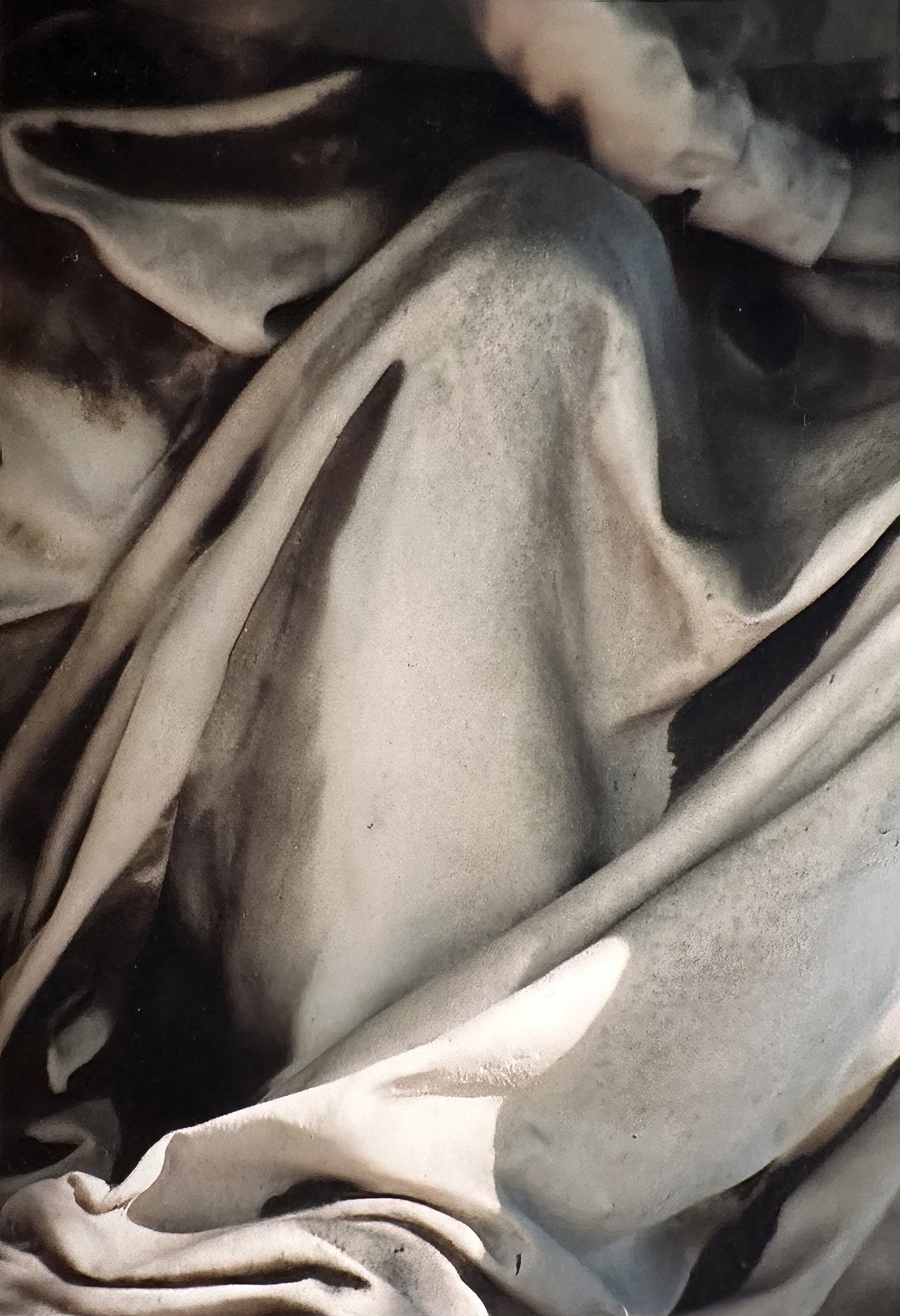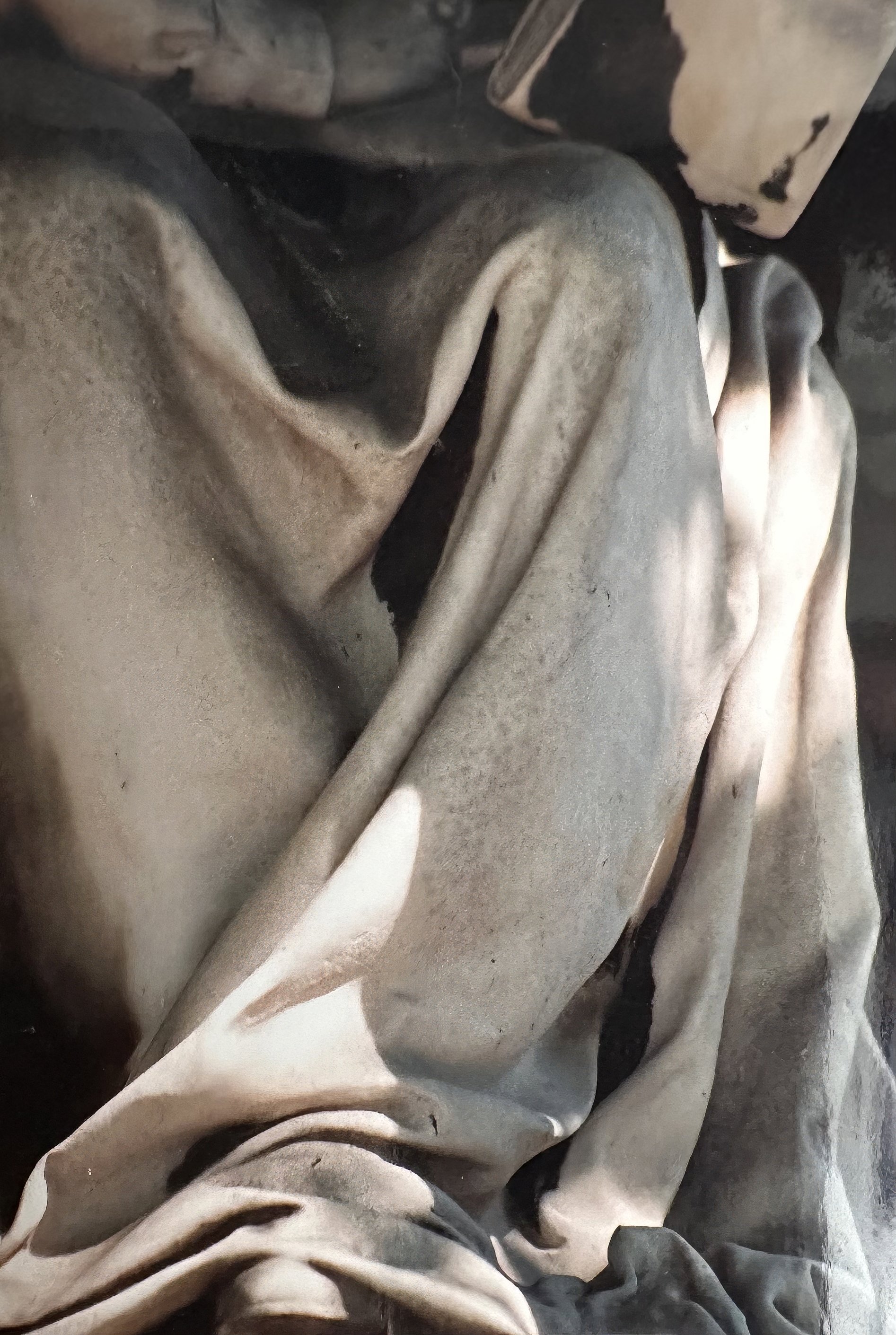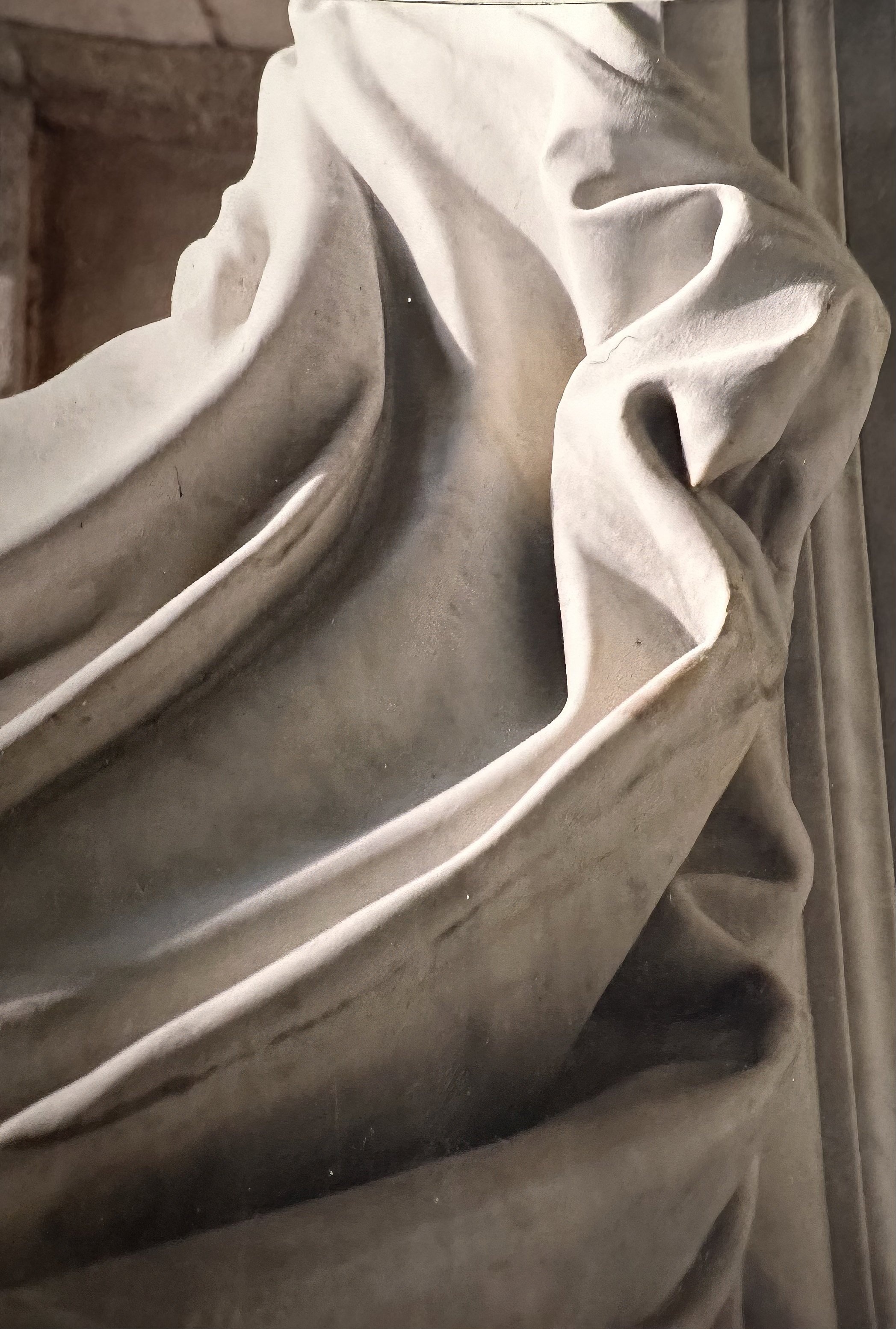Accident plays an important part in even the most meticulously planned art. LeFevre was moving an 8-foot tall bronze piece around his studio but it toppled into another piece leaning against a wall, a photo-relief of a Canova marble, a statue of Perseus. Smaaash! He put the fragmented piece into a trash pile, and then looked at it and said, “I realized that maybe the broken photo wasn’t ruined after all.”






